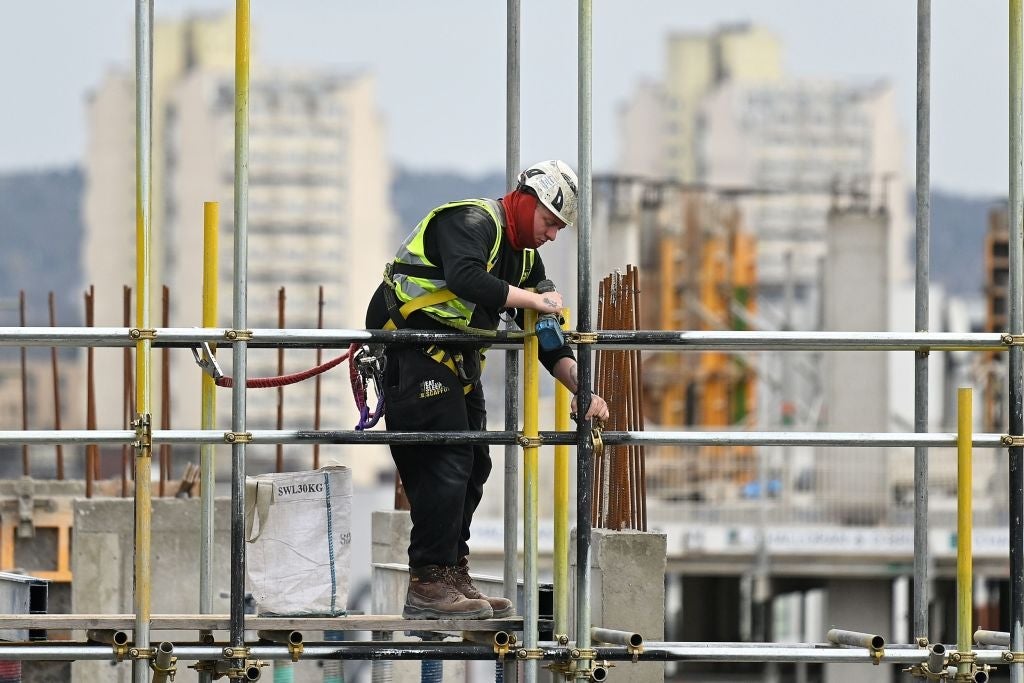

US President Joe Biden has embraced his country’s growing labour shortage as the mechanism necessary to boost wages and productivity, despite fears of rising inflation.
Talk of labour shortages has now made its way across the Atlantic, with blame falling on the dual shocks of Brexit and Covid-19 for apparent hiring shortages.
Overall demand for workers has indeed risen substantially since the depths of the pandemic, but is not significantly higher than demand seen in 2018. That is not to say the jobs market is returning to normal: the nature of the work available is starkly different to the UK’s pre-Covid labour market.
Online retail and construction drive UK job recovery
The rise of online retail is powering a hiring spree in the transport, logistics and storage sectors, with job advertisements triple the level seen in February 2020. Lockdown also seems to have inspired a surge in demand for domestic help, with job openings up by 168% on their pre-pandemic level.
The construction sector, which experienced one of the sharpest falls in output at the beginning of the pandemic, is rebounding quickly as consumers and businesses deal with their backlog of projects. Job advertisements in the sector are nearly double their pre-pandemic level (up 91%), and businesses are struggling to hire enough workers.
Despite concerns about a general tightening of labour markets, however, only the construction and associated utilities sectors have seen a significant rise in vacancy rates since the onset of the pandemic.
One in every 43 construction jobs is currently vacant (2.8%), up from one in 55 in February 2020. For water and waste management the figure is one in 36, and for non-water utilities one in 22 (up from one in 52 and one in 40, respectively).
No other sector has seen a significant increase in vacancy rates compared with before the pandemic. Despite reports, vacancies in the retail and hospitality industries are actually lower in early July 2021 than they were in February 2020 (1.1 and 0.8 percentage points, respectively).
Notably, the unprecedented surge in demand for transportation and storage workers has coincided with a record-low number of vacancies in the sector, indicating an ample supply of available workers.
The labour market certainly isn’t tight by any historical standards. The number of people claiming unemployment benefits per vacancy currently stands at 2.4, according to the latest UK government estimates, significantly higher than the pre-pandemic average of about 1.6.
Nonetheless, some businesses are struggling to fill particular roles. Figures from GlobalData suggest that as of 6 July there were more than 38,000 vacancies for jobs in the UK that had been open for at least seven weeks.
Almost one in ten of these roles (9.6%) requires training in software development, suggesting that a skills gap is partly to blame.
Is there a UK skills gap?
This UK skills gap may have increased over lockdown, with vacancies more likely than ever to be in areas where technical expertise is required.
Two-thirds of current long-term vacancies do not require any technical skills (68%).
Government data shows that jobs in health and social work now make up 18.9% of vacancies, up from 16.5% in 2019, while the share of vacancies that are in construction or manufacturing has risen from 9.9% to 12.3%. By contrast, the share of vacancies in retail or hospitality has fallen from 21.8% to 17.7%.
Engineering companies Aecom and Peter Brent Associates together currently have 1,090 long-term vacancies, the vast majority of which require specific technical skills (58% and 94%, respectively). Pharmaceutical giant AstraZeneca has 386 such posts, three-fifths of which require particular technical skills (59%).
The problem is not just a shortage of skills, however. According to GlobalData, two-thirds of current long-term vacancies do not require any technical skills (68%), while 28% require no particular educational background.
For instance, Amazon currently has 552 long-term vacancies, just 14% of which require any specific technical skills. Retailer WH Smith has 354 such posts, none of which list any technical skill requirements.
For these workers, dissatisfaction with the offered pay or working conditions may be what is holding them back.
Putting the issue in black and white during a press conference in June, US President Joe Biden reflected on concerns raised about a rising labour shortage. He said: “I remember you were asking me... 'Guess what? Employers can't find workers.’ I said, ‘Yeah... pay them more!’.”







